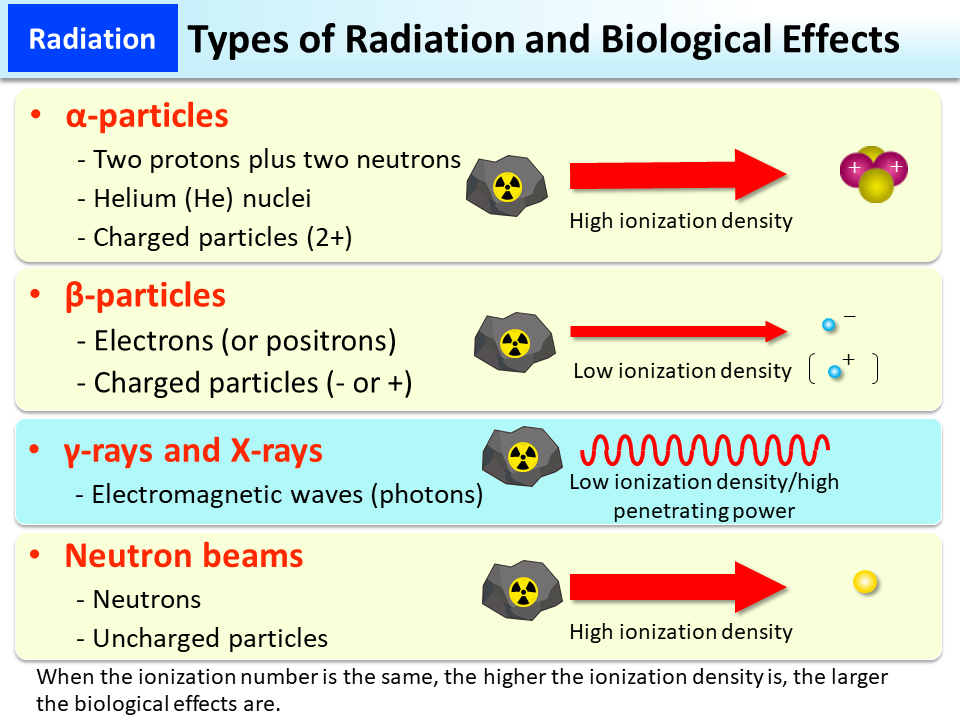Types of Radiation and Biological Effects
External exposure to α (alpha)-particles does not cause problems because α-particles have weak penetrating power against biological tissues and cannot penetrate the horny layer of the skin (layer of dead cells on the skin surface). However, internal exposure to any radioactive material that emits α-particles causes large amounts of local ionization, i.e., high-density ionization, within tissues, providing concentrated energy. This significantly damages DNA and has strong biological effects.
β (beta)-particles cause direct ionization of the substance it passes through, as do α-particles, but because of their low ionization density, their biological effects are not as strong as those of α-particles. Penetrating power of β-particles is also weak but stronger than that of α-particles, and external exposure to β-particles could affect the skin and subcutaneous tissues.
γ-rays and X-rays reach deep organs and tissues because of their strong penetrating power but do not have high ionization density. Their biological effects are similar to those of β-particles.
Since a neutron has a mass almost equal to that of a proton, a neutron beam stops efficiently when colliding with a proton. Since the human body contains a large amount of water, neutrons lose their energy as they collide with hydrogen nuclei (protons) that make up water molecules.
(Related to p.15 of Vol. 1, “Types of Ionizing Radiation,” and p.18 of Vol. 1, “Ionization of Radiation - Property of Ionizing Radiation”)
- Included in this reference material on March 31, 2013
- Updated on March 31, 2019

